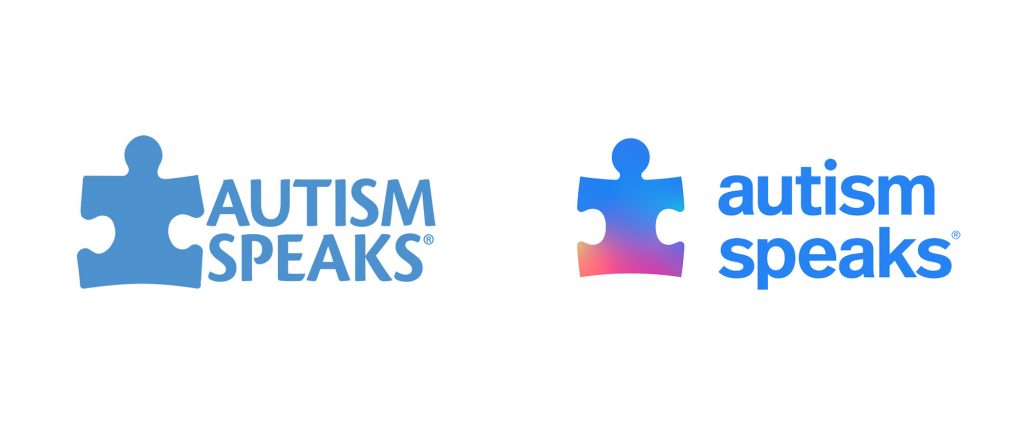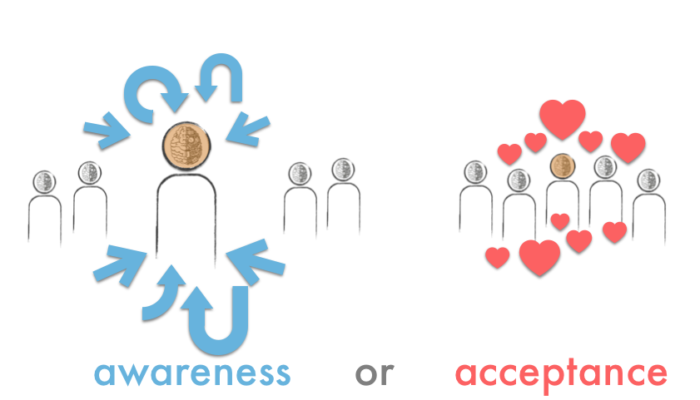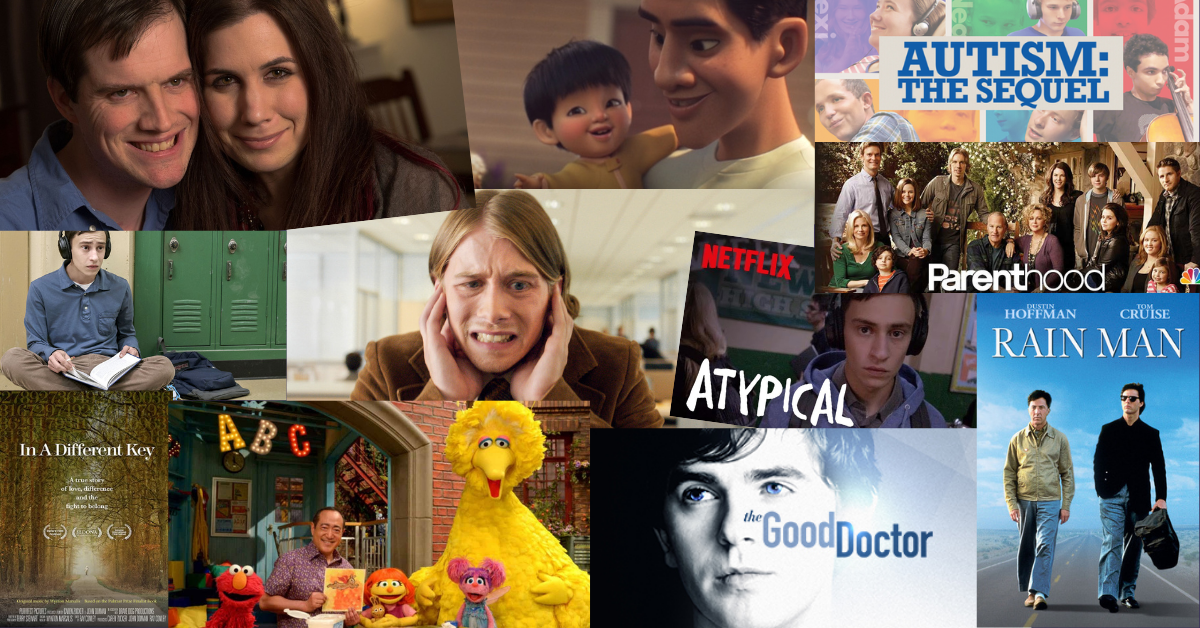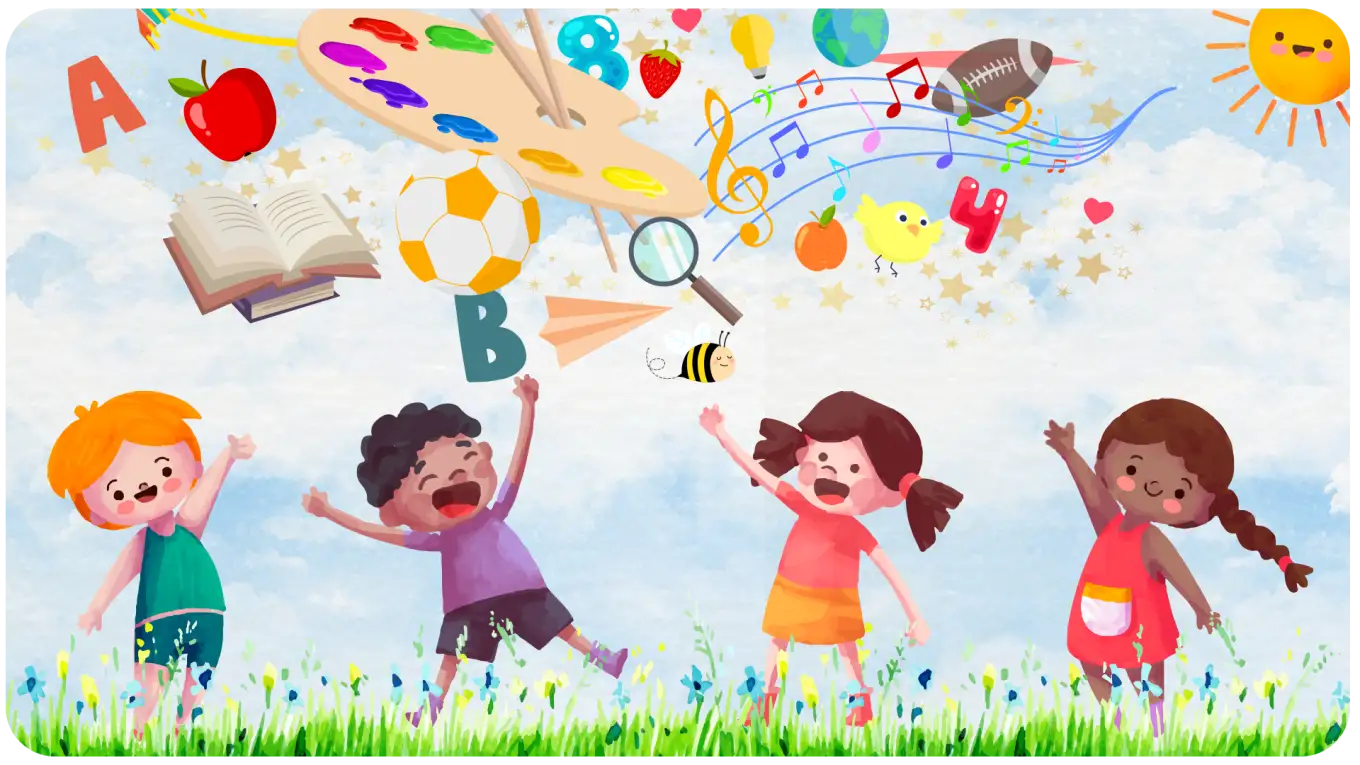by Jen Sobieski, MSEd | April 28, 2022
April is Autism Awareness Month, which has been progressing into Autism Acceptance Month! World Autism Awareness Day is an internationally recognized day on April 2 every year, encouraging Member States of the United Nations to take measures to raise awareness about people with autism spectrum disorder throughout the world.
How did Autism Awareness Month start, and why did it shift to Autism Acceptance month?
In the United States, non-profit Autism Speaks helped to raise awareness of Autism Awareness Month by encouraging people to wear blue and promote the puzzle piece icon as part of their Light It Up Blue campaign. Autism Speaks’ mission is to “promote solutions across the spectrum through advocacy and support, while increasing understanding and acceptance of people with autism; and advancing research into causes and better interventions for autism spectrum disorder and related conditions“.

Autism Speaks’ new logo on the right-hand side. Credit: Autism Speaks, Brand New
In recent years, some people are now leaning towards the Red Instead campaign and infinity signs to represent one’s acceptance of those with autism. This shift has been taking place to create more action being done! In addition, Autism Speaks rebranded in 2020 to be more inclusive of neurodiversity rather than pursuing a cure for autism as a disorder. Ultimately, the Light It Up Red Instead campaign wants to change the negative associations that Autism Speaks or other older autism awareness campaigns have created. Supporters of the Light It Up Red Instead campaign may feel that with autism AWARENESS, people may believe that autism is a struggle or a mysterious puzzle that needs to be cured; whereas, with autism ACCEPTANCE, an association of love, positivity, and belonging in one’s community is being promoted.
It’s important to keep in mind that just because you wear a certain color does not necessarily mean you support an organization that is or was previously associated with it. For example, many schools and offices have Light It Up Blue campaigns that continue to grow, and overall awareness and acceptance of autism is the overarching goal for our community.

A visual representation of autism awareness (arrows pointing towards a person with autism to bring attention) versus autism acceptance (hearts surrounding a person with autism to show support and compassion). Credit: Michelle Swan
Some may be confused as to why the shift in campaigns or why now, but what ultimately matters is what can you do to show your support. As a special education teacher, when I first heard about this cultural shift, I didn’t know much about the transition myself. Through my own research on autism awareness as part of this blog post, I hope it also helps you gain a better understanding of Autism Awareness/Acceptance Month and figure out what you can do.
Everyone can have their own opinion as to which color they would like to use to show their support during Autism Acceptance/ Awareness Month but as long as you stay informed and accept and respect those with autism for their unique and creative needs you are doing the right thing!
What can you do to show your love, respect and advocacy for those with autism during Autism Awareness Month?

A collage of scenes and posters from various movies, TV shows, and other resources about autism. Credit: Bancroft
1. Talk about it. The best way to learn is by experiencing with others. Have a conversation at the dinner table one night about what autism acceptance looks like. Share experiences! If you haven’t had the pleasure of getting to know someone with autism there are some wonderful TV shows, movies, podcasts, storybooks and Pixar shorts about what it is like to be autistic or know someone who is.
- Atypical – Netflix
- The Good Doctor – ABC
- Sesame Street – PBS
- Parenthood – NBC
- Rain Man – Amazon Prime
- Love On the Spectrum – Netflix
- As We See It – Amazon Prime
- Float – Disney+
Bancroft, a non-profit dedicated to supporting people with intellectual disabilities including autism, maintains a full list of movies, documentaries, TV shows, and other resources.

Credit: ANZAED
2. Volunteer. Get to know people on the spectrum or their family members. There are SO many wonderful organizations that offer services or activities for people on the spectrum. Many of these programs are inclusive and are offered to people of all abilities. You can sign up for an inclusive art class or volunteer with an organization in need of some extra hands.
If you’re in the New York metro area, below are some organizations you may want to connect with:
- Backyard Players & Friends: Inclusive, arts-based community program, open to the public for participants age 14 and older
- Friendship Circle: Inclusive programming for individuals with special needs
- Life’s WORC: Residential and community services opportunities
- Winter’s Center for Autism: Employment opportunities for people with autism
- Best Buddies: Opportunities for one-to-one friendships, integrated employment, leadership development, and inclusive living for individuals with intellectual and developmental disabilities
3. Be active on social media. Social media can be overwhelming and sometimes inaccurate. If you want to spread the word for others to be aware and accepting of autism, go for it! Be mindful that you want to promote HOW to do this. Perhaps share a story of a positive experience you’ve had with someone on the spectrum, share the story of a celebrity or artist on the spectrum, or post about a local organization that offers classes or fun experiences tailored to those with autism. Post more than a blue puzzle piece or a red hashtag. Focus on what really matters: respect, equality and acceptance for the beautiful minds of those on the autism spectrum.

Credit: Otsimo
4. Research. Learning about the shift in the autism awareness month campaigns takes time and understanding both sides. Read articles and find out which nonprofits are making a difference for people with autism, some might be in your own neighborhood!
5. Donate. After you’ve researched and maybe even volunteered with an organization, raise funds to keep it going. Check with your employer, too: many large companies will match your donation to double your impact. Oftentimes, small or local nonprofits are doing more good than massive organizations who spend thousands on advertising. Find the ones you support and help them keep doing good for others.
Want to see how FrenalyticsEDU helps special needs students live more independent lives?
Click here to learn more, or give us a call at (516) 399-7170.
Jen Gentile, MSEd started working with the special needs community in 2008 through various roles, including Best Buddies and Camp A.N.C.H.O.R, before joining the Teach for America Corps in San Diego, CA in 2018. As a teacher at Escondido High School in Escondido, CA, Jen championed the expansion of FrenalyticsEDU as a personalized learning tool for her students with Autism Spectrum Disorder (ASD), Down syndrome, and other complex intellectual disabilities. Now back in New York, Jen joins the Frenalytics team as a Special Education Consultant while simultaneously working with students as a fifth-year special ed teacher at Valley Stream Central High School. Contact Jen: jen@frenalytics.com

